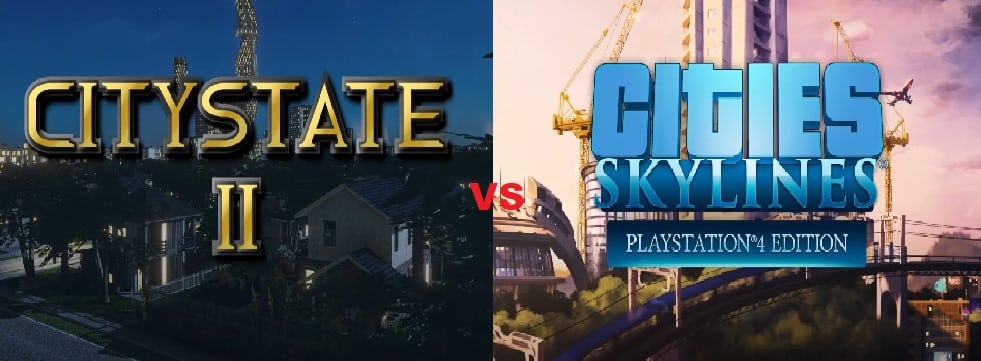
Both Citystate 2 and Cities Skylines are examples of games that fall under the category of city simulations. These games provide players the opportunity to build, rule over, and govern their very own fictional or real-world cities. So, what separates them from one another? Which one is more deserving of your time and attention? What follows is a comparison of the two in terms of the features and information available.
Citystate 2 vs Cities Skylines Comparison
Cities Skylines is a city simulation that has a lot more going for it than the SimCity reboot that was developed by EA. This is especially true when it comes to the variety of city types that can be created with the game as well as how the simulation handles itself in relation to resources such as water and power. SimCity has a polished appearance in terms of presentation, but it falls short in practically every other area of its design.
- Cities and Area
All of the cities in SimCity are constrained inside a square that remains the same size throughout the game. It strongly favors flat locations and encourages you to build roads in a grid pattern so that you may make the most efficient use of the available area. If there is a lake or a large mountain on the map, it signifies that there is less land available for development. They turn into roadblocks and serve no use in the city other than to restrict its growth. The fact that everything must be linked by road makes the problem much more difficult to solve, since it is impossible to construct anything that roads cannot reach.
In Cities: Skylines, the scale is substantially larger, and you are able to expand your city even if you do not utilize any modifications to do so, regardless of how many people live there. It is also not essential to link services to roadways, which means that you may set down a power plant or a water pump anyplace as long as it is connected to an electrical grid and subterranean pipelines. When a power generator is located in close proximity to a structure, the building does not need the use of power wires.
This indicates that even “inaccessible space” can be utilized and exploited; in the city in which I currently reside, there were two enormous hills that I transformed into wind farms, providing energy by placing windmills all along the slopes, which were then connected to the homes that were located below them.
- Features
In SimCity, the distribution of electricity and water was handled by pretending that these resources were “units.” If a power plant produced forty units of electricity, then that amount of electricity would be delivered down a road, where it would drop by one unit each time it went past a structure until it was equal to zero. Unfortunately, this meant that it would take a long for a building to gain access to electricity merely because it’s at the border of a city, and it may lead to misunderstanding as to whether your power plants aren’t generating enough, or whether it’s just a matter of having to wait it out.
One other feature is the option to give some sections of your city the status of districts. You could make it such that fire alarms needed to be put in every building in one neighbourhood of the city, but the other neighbourhoods wouldn’t have to comply with this rule.
- Mods
Mods. In conclusion, not only can you quickly locate modifications to improve the quality of your gaming experience, but you are also strongly urged to develop your own in the game Cities: Skylines. Once you have purchased the game, you will have the opportunity to simply subscribe to these modifications on the Steam Workshop. You will also have the power to create and share any assets that you have created. It is quite unlikely that SimCity would provide you permission to download a wide selection of modifications or files for free in order to improve your gameplay experience. It can’t be overstated how much superior Cities: Skylines is than Simcity. This is the best way to express it.
